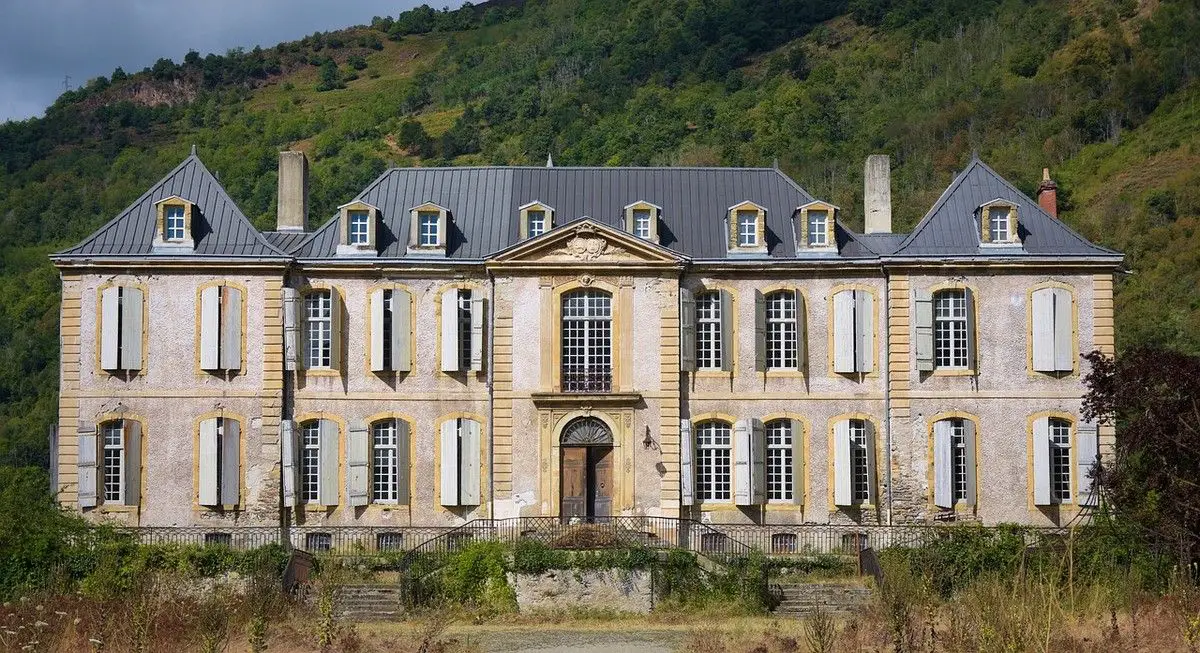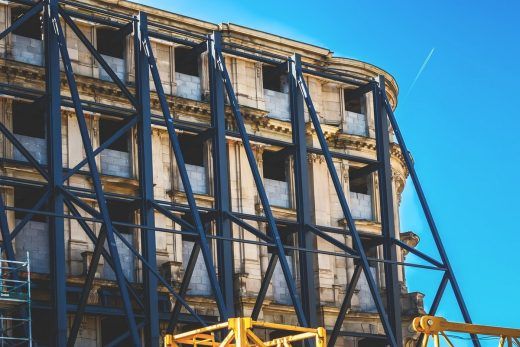Responsible rubbish removal, building restoration, home renewal trash, removing house refurb waste
Revitalizing Historic Buildings: Responsible Rubbish Removal
10 April 2024
Are you a fan of architecture? Do you appreciate the allure of history frozen in time by grand structures and edifices? Then you would agree that revitalizing historic buildings is not just about preserving cultural heritage, but enhancing societal aesthetics as well. You’d also understand that restoring such buildings requires tact, skill, a strong dedication to detail, and of course, responsible rubbish removal!
Significance of Historic Building Revitalization
The process of revitalizing historic structures maintains our connection to the past. These iconic landmarks provide insight into different eras and civilization trajectories. They depict a clear timeline of architectural evolution—RM’s (Restoration Mementos).
Moreover, restoration preserves the unique character of cities by maintaining architectural diversity. Too often, old buildings are demolished to make way for modern counterparts, eroding the charm that historic buildings bring to urban landscapes.
Besides their cultural significance, refurbishing these buildings also has economic benefits. Creative restoration can profitably repurpose structures into commercial spaces or affordable housing units—another form of sustainability.
Preserving architectural treasures is no small feat and often involves considerable waste management. This brings us to responsible rubbish removal in building restoration projects— in other areas covered like Sydney’s eastern suburbs and beyond.
Rubbish Removal: Initial Steps
Cleaning up is typically one of the first steps during a restoration project. Initial rubbish removal should be methodical to ensure potential reusable or recyclable materials aren’t discarded mindlessly.
The standard process involves identifying hazardous waste that needs special handling—HWP (Hazardous Waste Protocol). Ensuring safe disposal protects environmental health and complies with local regulations.
Finally, categorizing non-hazardous waste into recyclable or non-recyclable groups helps in proper disposal. Establishing a systematic procedure for sorting these materials can provide a template for future renovation projects.
Cleanup, however, is no job for amateurs. Reputed rubbish removal companies play a crucial role here. Their involvement ensures building restoration projects embody environmental responsibility in every phase of the process.
The Role of Rubbish Removal Companies
Skilled rubbish removal companies partner with property developers to effectively handle waste during restoration projects. These experts have the competence to navigate the complexities of large-scale cleanups and follow stringent disposal guidelines.
Furthermore, getting a professional cleaner minimizes health risks. Improper handling of hazardous materials exposes individuals to dangers like asbestos-related illnesses. Reputable companies have adequately trained professionals that ensure safety.
Waste management agencies further dedicate significant resources towards ensuring environmentally-friendly waste disposal, which is an integral part of every restoration process—cultivating a sustainable future by reducing landfill content.
Rubbish removal companies not only take care of disposal, but they also introduce eco-friendly methods into the construction process itself. Let’s delve into how these eco-friendly approaches work in the next section.
Eco-Friendly Disposal Approaches
One primary focus during responsible rubbish removal is prioritizing recycling over dumping directly into landfills. Certain materials like metal, glass, and concrete can be recycled, significantly reducing environmental impact—EPR (Environment Protection and Rehabilitation).
The demolition sector has adopted impressive innovations like debris recycling stations and onsite crushers that promote the reuse of construction elements. Strategically deconstructing portions of buildings offers opportunities for material reuse.
Beyond recycling, other eco-friendly approaches include utilizing waste for energy generation. Converting non-recyclable materials into energy can significantly decrease landfill volume—adapting to a circular economy where everything finds renewed use.
Lastly, arranging for regular rubbish removal during the renovation process, rather than at the end, reduces contamination chances. Timely disposals ensure project cleanliness and safety.
Restoration: Salvaging and Recycling
When it comes to revitalizing historic buildings, the value of salvaging and recycling cannot be overstated. These practices not only minimize environmental footprint but also give rebirth to unique architectural elements that can be hard to reproduce.
Materials like bricks, hardwood flooring, and decorative details are often reusable with minimal reconditioning—preserving not just their history, but also their distinctive character.
In instances where certain parts can’t be reused in restoration projects, they may find new life elsewhere. For example, reclaimed wood might serve in crafting furniture while an old fireplace mantel could become a quirky bookshelf.
Thereby, the process of historical building revitalization becomes more than mere aesthetics and cultural preservation. It’s a lesson in resource conservation and responsible living. It tells us how societal progress need not impair environmental sustainability—a balance between history’s allure and our future’s imperative survival.
Heritage Materials: Handling and Disposal
The restoration of historic buildings involves handling centuries-old materials. These materials, referred to as heritage materials, have their own set of challenges for disposal. Many are reusable or recyclable, but some require special handling. Hence, the importance of the HMDR – Heritage Material Disposal and Recycling.
One such material is lead-based paint. If disturbed, it can be harmful and demands careful management. Lead isn’t the only issue either. Asbestos was used widely in older buildings for insulation and fireproofing. The process of stripping out such materials must adhere to the Asbestos Hazard Emergency Response Act (AHERA).
Whether it’s contaminated soil, chemicals, or dust, all these require skilled waste disposal practices. It’s essential to comply with regional disposal regulations while preserving the building’s architectural integrity.
Glass from old windows or doors is another common heritage material that often ends up in landfills unnecessarily. With the right strategies in place, it can be repurposed into new glass products instead.
Avoiding Landfill: Repurposing Historical Artifacts
Oftentimes during a restoration project, many historical artifacts may go unnoticed amidst all the rubble. With a conscious effort to save these pieces, landfill waste can be significantly reduced—part of an innovative practice known as the Historic Artefact Repurposing Method (HARM).
- Hinge joints and doorknobs could become decorative items,
- Worn wood could be used for crafting ornate pieces,
- Stones from walls could be utilized in creating unique landscaping features.
It’s not always about finding immediate uses either. Sometimes these artifacts can be sold to antique stores or collectors. This not only saves precious space in our landfills but can provide additional funding for the restoration project.
The idea is clear — there is value in every bit of waste from a historic site. With creativity and resourcefulness, converting waste into artifacts contributes significantly to environmental conservation.
Legal Aspects of Rubbish Removal
Rubbish removal from historic buildings isn’t merely about transporting debris from one location to another. Comprehensive understanding of environmental laws — known as Environment Legal Compliance (ELC)— is critical.
Firstly, permission to perform restoration work must be sought, particularly in designated historical areas. This includes providing comprehensive waste management plans to local councils or heritage bodies.
Moreover, hazardous materials such as asbestos have explicit removal and disposal regulations that must be meticulously followed. Any violation could result in significant penalties, both financial and reputational.
Professional rubbish removal services should also hold appropriate licenses confirming their capability to handle different types of waste safely and responsibly.
Lastly, legal compliance extends beyond just waste disposal. Even the trucks used for transportation must adhere to regulations on emission standards—demonstrating the depth of legal considerations when dealing with rubbish removal in heritage restoration projects.
Preparing a Waste Management Plan
A comprehensive waste management plan—otherwise known as a Historical Debris Management System (HDMS)—is a critical component of any restoration project. It plays a leading role in maintaining budget control, sustainable disposal practices, and adherence with local regulations.
- An HDMS begins with estimating waste quantities and identifying different types of debris expected,
- The next step involves determining potential recycling or reusing solutions for each material type,
- Formulating proper disposals for non-reusable materials follows this.
Implementing the HDMS isn’t just about planning but execution as well. This includes training staff on waste separation practices, managing recycling stations onsite, and coordinating with rubbish removal services for regular pickups.
Lastly, it involves constant monitoring and updating to address unforeseen barriers, ensuring the plan remains fluid and adaptable to change — a testament to detail-oriented project management.
The Impact on Heritage Tourism
It’s not just about the buildings themselves but the life they bring to destinations. Heritage tourism thrives on history, charm, and authenticity provided by well-preserved architectural landscapes. Hence, responsible rubbish removal plays a role in supporting Sustainable Heritage Tourism Development (SHTD).
By ensuring careful disposal practices during restoration, you maintain visual appeal and safety during the project process. Remember, eyesores or hazardous situations could dissuade visitors and diminish local economies that rely on tourism.
Negative impacts on wildlife due to improper waste management could also affect those interested in eco-tourism. Thus, responsible restoration indirectly contributes to protecting local biodiversity.
If done with care and honor for its original structure, restored buildings can become attractive landmarks. They can stimulate economic growth through increased tourism opportunities.
Responsible rubbish removal for historic buildings Conclusion
Revitalizing historic buildings is a journey through time — one that should be navigated responsibly. Balancing preservation of our past with needs of the future demands commitment and ingenuity. When you incorporate proper rubbish removal techniques into your renovation processes,you are not only breathing life into a piece of history but you uphold environmental sustainability too—making a statement that echoes long into our collective future.
Comments on the guide to Responsible rubbish removal, building restoration article welcome
Glasgow Architecture
Major Strathclyde Building Designs – selection:
Historic Glasgow : best Glasgow architecture of the past
Comments / photos for the Responsible rubbish removal, building restoration advice page welcome.




